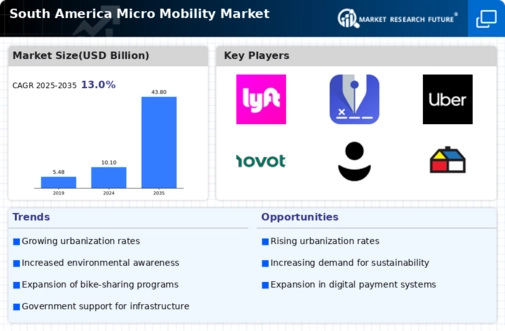The South America micro mobility market has been growing rapidly, fueled by changing urban transportation needs, increasing environmental consciousness, and advancements in technology. The competition in this market is characterized by a diverse mix of local and international players who are seeking to meet the demand for efficient, cost-effective, and eco-friendly transportation solutions. Factors such as regulatory frameworks, infrastructure development, and customer preferences play pivotal roles in shaping the competitive landscape. Companies are innovating their offerings, diversifying fleet types, and focusing on providing user-friendly technology to ensure a competitive edge.
The entrance of multiple players has led to heightened competition, prompting businesses to adopt creative strategies to capture market share while navigating the challenges posed by operational and infrastructural limitations. Company Lyft has established a moderate presence in the South American micro mobility market, capitalizing on its expertise in ride-sharing and urban transport solutions. With a focus on sustainability and community impact, Lyft has tailored its offerings to align with local transportation needs. The company's commitment to safety and user experience has garnered attention among potential users, reinforcing its competitive advantage.
Although Lyft primarily operates in the North American market, its strategic partnerships and potential expansion plans indicate a willingness to adapt its model to meet the unique requirements of South American cities. The strong brand reputation and technological infrastructure that Lyft possesses contribute to its attractiveness in a market where consumers are increasingly looking for reliable and environmentally friendly transport options. Dott enters the South America micro mobility market with a particular emphasis on offering a balanced fleet of electric scooters and bikes designed for urban commuting.
The company has positioned itself as a forward-thinking player by emphasizing sustainable transportation solutions and user-friendly technology. Dott's strengths lie in its operational efficiency and the strategic deployment of its vehicles, combined with a robust focus on customer support and local partnerships. The firm has been actively exploring growth opportunities, including potential mergers and acquisitions that can enhance its service capabilities within the market. Dott’s ongoing efforts to integrate user feedback into its evolving service offerings make it a competitive contender in the region, as it addresses local transportation challenges while simultaneously prioritizing eco-conscious mobility solutions.





















